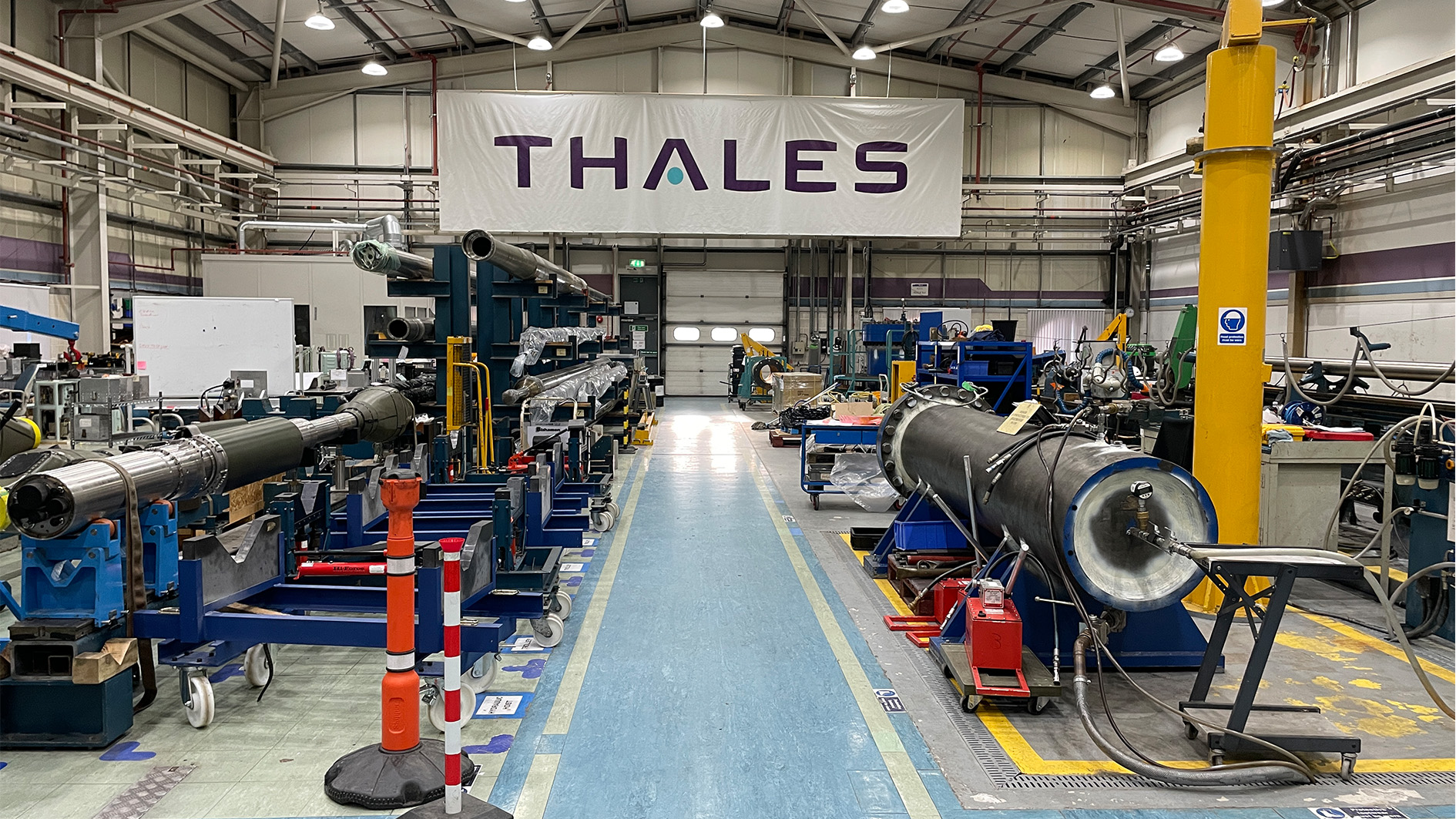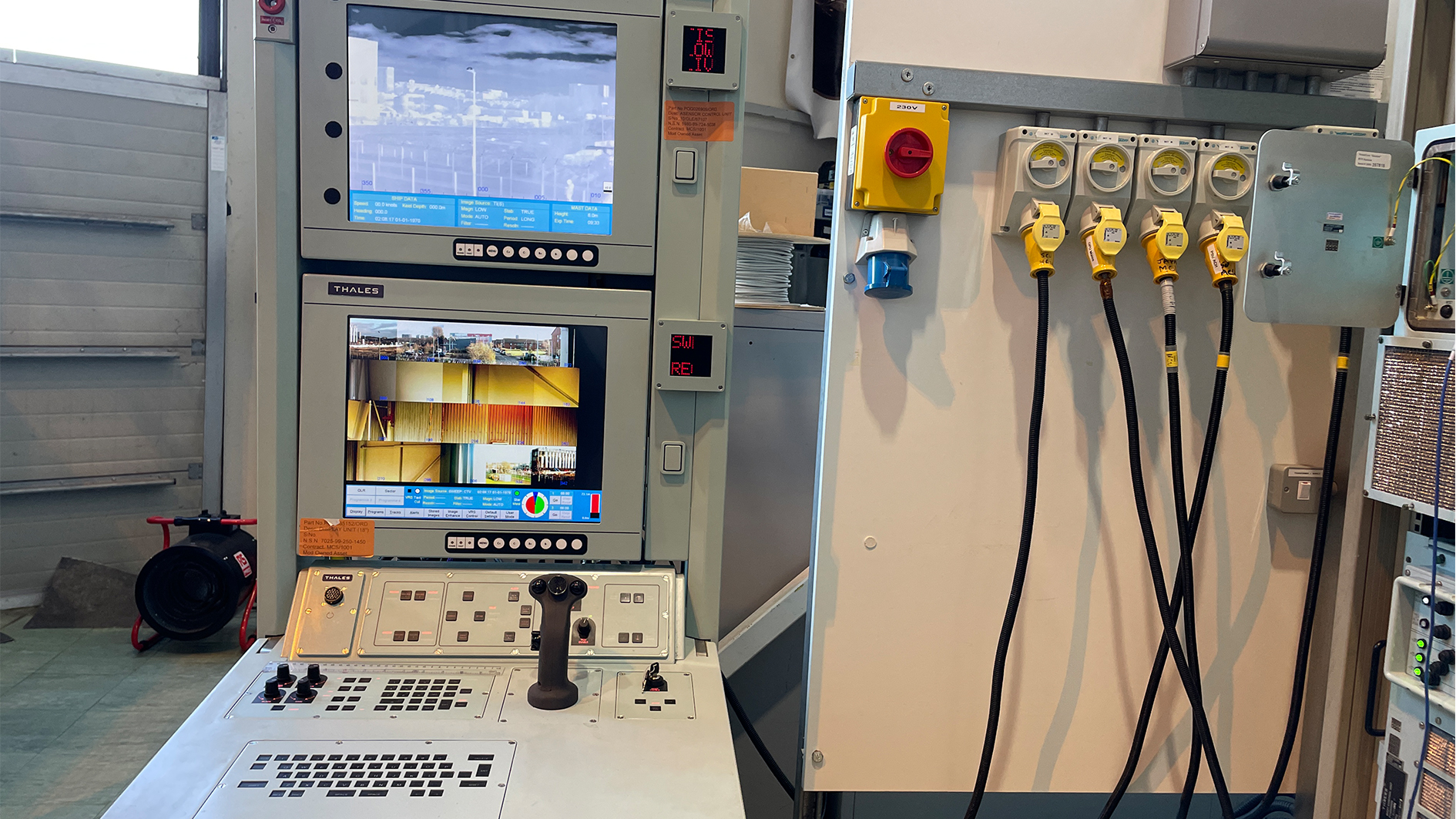Inside the factory that makes the eyes at sea for the Royal Navy's submarines
Global technology company Thales has designed, built and fitted every Royal Navy submarine with a periscope or optronic mast since 1917, providing their "eyes at sea" for more than a century.
The Glasgow site is the oldest of the Thales business in the UK, with a specialisation in optical-electronic systems in support of land, sea and air forces.
Managing director Stephen McCann said: "It was originally founded in 1888 when two professors, Barr and Stroud, spotted an advert in a journal for a rangefinder for the British Army.
- HMS Anson: Fifth Astute-Class submarine launched
- Submarine rescue specialists practise lifesaving capabilities in cold water
- US Navy welcomes first submarine built for mixed-gender crew into the fleet
"We've developed that technology for over 100 years including introducing thermal imaging to the periscope.
"Latterly, we've gone to optronics masts which reduces the hull-penetrating element and, of course, we're right in the middle of executing a contract to develop the next generation of optronics masts, initially for the Dreadnought submarine and hopefully become a candidate for use across the whole of the flotilla."
Throughout the decades the team has had to consistently innovate using ever-advancing technology to help the Royal Navy remain a major force in submarine warfare.
Engineering manager Colin Binnie said: "HMS Astute has got two visual payloads, a starboard non-hull penetrating mast and a port non-hull penetrating mast.

"The starboard centre head has got a thermal imager and a high-definition colour. The port removes the thermal imager and incorporates an image intensifier.
"What that means is that the submarine command has got night vision capability."
The design and manufacture of these essential devices requires great expertise, with the company calling on generations of experience from both civilians and former submariners.

Senior project manager Ben Clarke, who served in the Submarine Service, said: "One of the great advantages that an optronics mast can give is command can have more than one set of eyes looking out at the submarine.
"Whereas traditionally on a periscope you would have one operator with eyes on a true optical path, multiple people can sit over the shoulder of the operator and observe the above-water scenario.
"One of the great advantages is minimising the amount of time that you can collect the above-water picture and then conduct analysis once the mast is lowered.

"You can operate this function known as a quick look round, or QLR, where the mast will be lowered, submarine will be going along, command will give the order to conduct a QLR.
"All the operator will have to do is invoke the procedure – the mast will then automatically raise itself, spin around and take the entire horizon and then lower itself.
"It then presents this as a series of images demonstrating the entire 360° image that command can then analyse with the mast lowered.
"When the mast is lowered your risk of counter-detection is much lower. If you have the mast above the surface there is a chance that it can be spotted, optically or through radar."









